Carrara, the Italian city famous for some of the finest marbles in the world, has produced the masterpieces of Renaissance masters such as Michelangelo and Antonio Canova. Now, right in the heart of the city’s quarry district, a startup wants to usher in a new era of sculpting where robots will – or rather – pick up the chisel.
Founded by Filippo Tincolini and Giacomo Massari, Robotor’s mission is to revolutionize the industry by simplifying the sculpting process through the use of robotics and artificial intelligence. The aim is to make sculpting faster, easier and more sustainable, and to enable artists to create works that would otherwise be unthinkable.
Robotor’s machine that replicates the Parthenon horse. Photo credit: Laura Veschi
Starting from research and the interplay of art, locality, tradition and technology, the startup has developed a robotic chisel powered by self-programming software.
It all started in 2004 when Tincolini founded Torart, a company specializing in the fusion of sculpture, contemporary art and design with the application of new technologies. Two years later, Torart developed the first robot, and in 2010 Giacomo Massari joined the team.
Join the TNW Conference in June and save 50% now
Take advantage of our 2 for 1 sale and bring your friend
After increasing commissions, collaborating with world-renowned artists like Barry X Ball and creating the replica Bow of Palmyra – after the original was destroyed by IS in 2015 – the duo founded Robotor in 2019. The size and financing of the company remains secret.
“Our robots are born by sculptors for sculpting,” co-founder Giacomo Massari tells TNW. “They are born from those who know perfectly the traditional sculpture in a territory, Carrara, homeland of sculpture.”
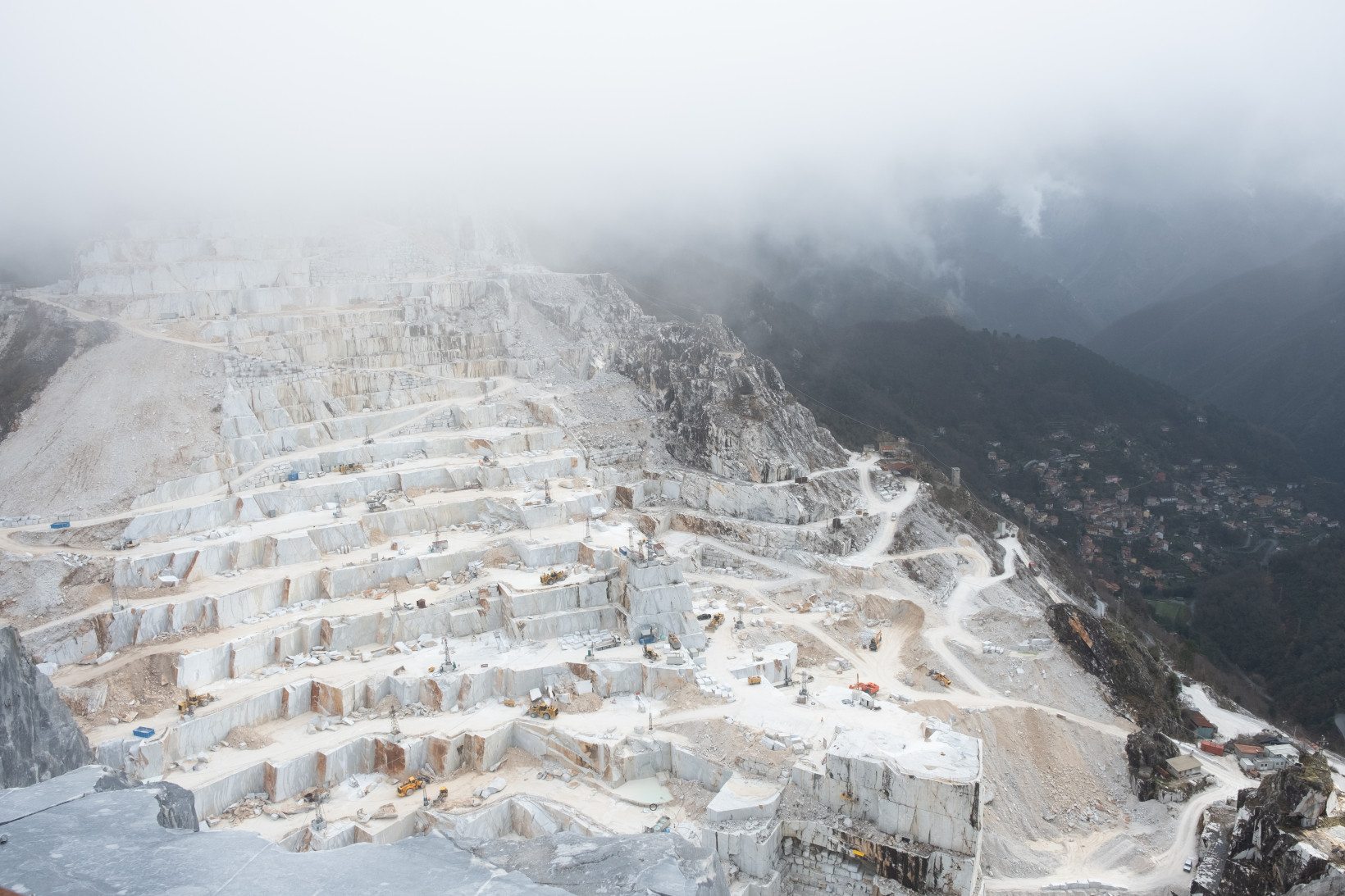 Carrara marble quarries. Photo credit: Laura Veschi
Carrara marble quarries. Photo credit: Laura Veschi
The idea behind their development is “trust a robot with tedious work,” adds Massari. “But the entire Robotor project grew out of a precise philosophy that is the ‘daughter’ of 18 years of experience in stone processing.”
Put the robot sculptors to work
The robotic system consists of a mechanical arm using electrospindles of various sizes and capacities, with an automatic tool change function.
The arm is mounted on a multifunctional, modular base that contains the necessary electrical and hydraulic components. It is also accompanied by a seventh-axis rotary table on which the marble and future sculptures stand. The table rotates in full interpolation with the robot’s movements, making the most of its flexibility, and can support a workload of up to 50 tons.
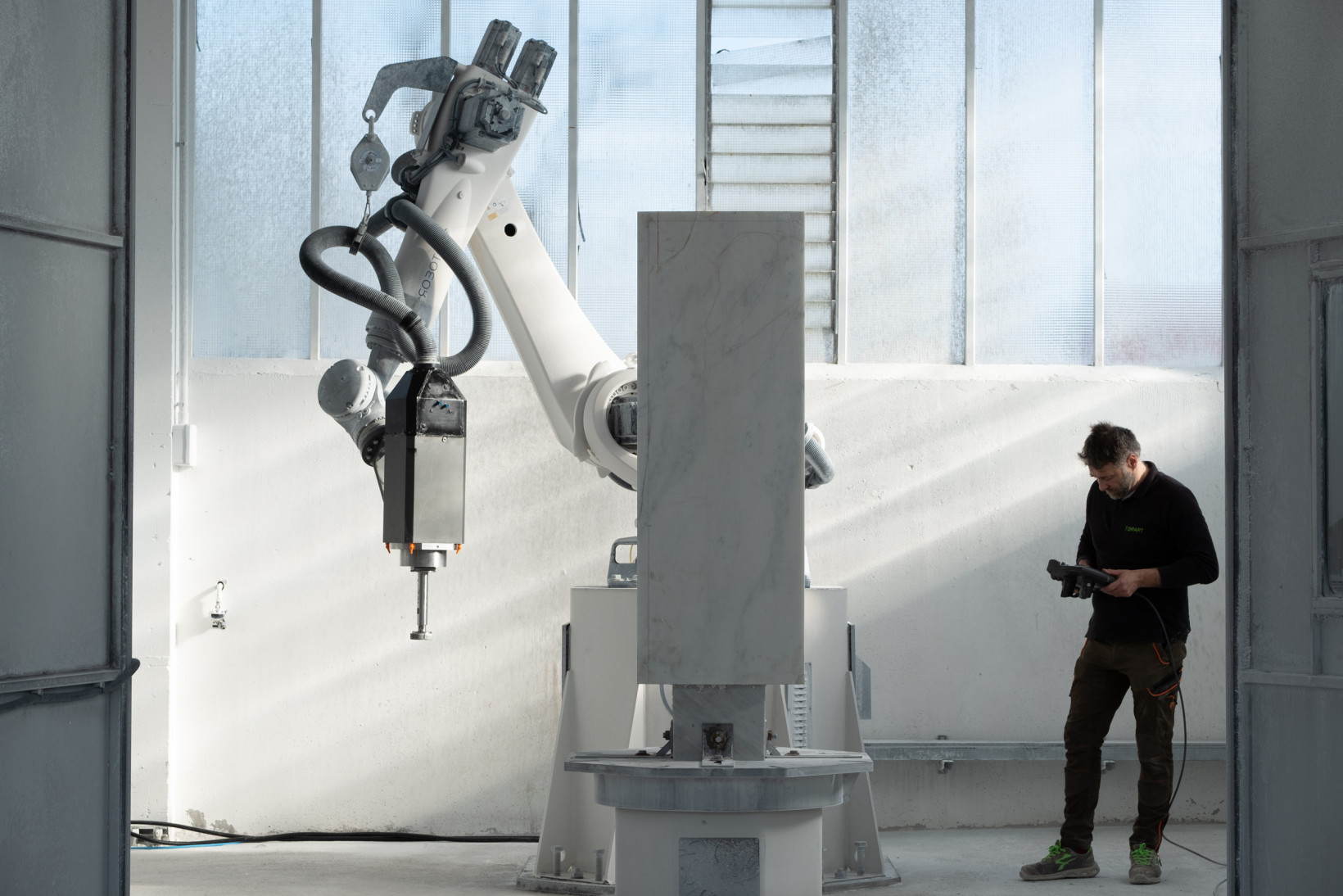 Photo credit: Laura Veschi
Photo credit: Laura Veschi
The heart of the robotic system is the proprietary software called OR-OS, which was developed either for programming by experienced operators or for fully automatic self-programming.
The software takes a 3D model and automatically generates an optimized workflow and toolpaths without the need for human intervention. It then simulates the process internally to identify potential problems before sending instructions to the chiseling robot.
Based on the selected work path, the OR-OS software asks the robot to choose what types of products and tools it will use for the different stages of the production process: from molding to polishing to cleaning.
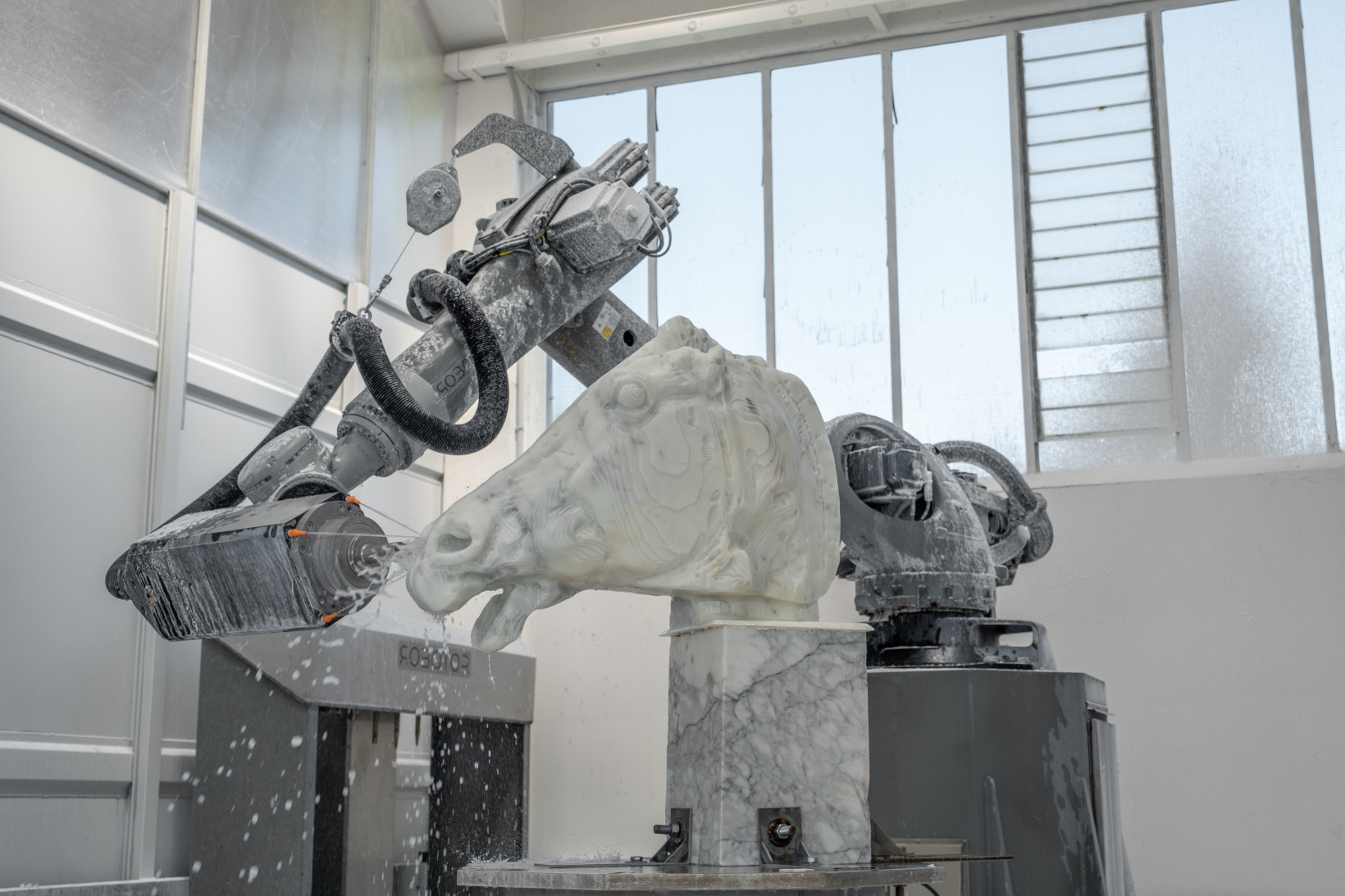 Photo credit: Laura Veschi
Photo credit: Laura Veschi
The robot then analyzes the stone or material it will be working on and examines its shape and properties to determine where and how it can be worked before moving on to production.
In addition to the robot’s ability to work fully autonomously, users can also program it and choose the work path it will follow. You’ll also be able to control various machine functions in real time, including speed adjustment, and monitor the status of the robot and its components for convenient alerts should any anomalies arise.
From the human hand to the robotic hand: speed, accuracy and innovation
Robotor’s mechanical sculptors offer a number of fascinating advantages.
First of all, the robots are designed to eliminate all tedious stages of the production process, work in extreme environments that would otherwise put humans at risk, and avoid human error.
“The use of suitable tools in combination with the optimization of work routes enables uninterrupted machine use around the clock and thus corresponds to the need for precise control of working times and costs,” says Massari. According to the co-founder, this results in a significant reduction in execution times and costs.
While cost savings are difficult to quantify, Massari notes that, on average, a work of art can be created by the robots in a tenth of the time it takes traditional techniques — excluding manual finishing.
Despite this fast pace, Robotor’s sculptors display an impressive level of accuracy.
To demonstrate this, Massari mentions the reproduction of the Muse Terpsichore, a famous sculpture completed by Canova in 1811 and shown in the exhibition “A tempo di danza” in the Archaeological City Museum of Vetulonia. The museum chose to display the replica without any manual post-processing to avoid confusion between the copy and the original.
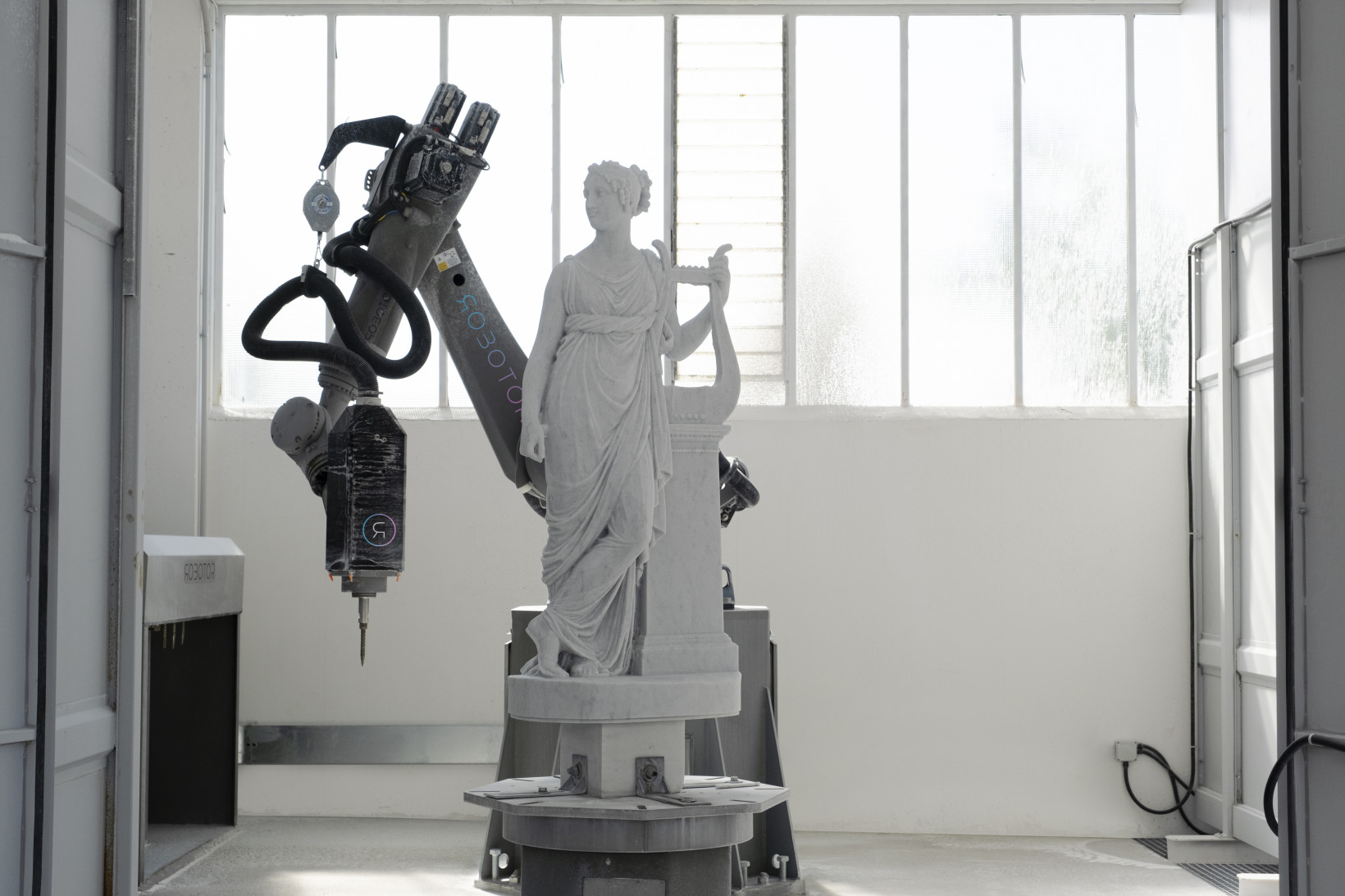 The Muse of Terpichore, replica by Robotor. Photo credit: Laura Veschi
The Muse of Terpichore, replica by Robotor. Photo credit: Laura Veschi
Most importantly, Massari believes the robotic chisels can push the boundaries of sculpture, allowing artists to create works that would have been “unthinkable” before robotic assistance.
“Artists who work with us, such as Quayola and Barry X Ball, are presenting themselves to the public with never-before-seen sculptures that are intended to be realized with the assistance of a robotic system and exploit its peculiarities,” he says.
“Each work of art is primarily determined by the materials available to the artist and their manipulation possibilities.”
The robots’ diamond-tipped tools, which extract material without breaking or splitting it, also open up new possibilities for the use of materials, including conglomerates of rock and earth, that cannot be processed using traditional methods.
According to Massari, this is also linked to sustainability, which is underlined by the software’s 3D model simulation and work path optimization. Thus, knowing exactly the dimensions of the final work of art, the block of marble can be excavated without waste.
While the robots are suitable for any stone product, Massari says, they mainly target three market groups: traditional sculptors aiming to introduce robotics into their production line, artists who want to manage all manufacturing phases themselves, and designers who want to create their own pieces directly produce. And thanks to their self-programming software, Robotor machines are accessible to everyone.
Besides facilitating the creation of novel works of art, Robotor derives its main satisfaction from preserving and communicating cultural heritage through the reproduction of great works of the past.
One such example is the Arch of Palmyra, reproduced at a scale of 1:3 based on photographs taken during a documentation campaign of the archaeological site.
 Replica of the Arch of Palmyra on display in New York. Photo credit: Laura Veschi
Replica of the Arch of Palmyra on display in New York. Photo credit: Laura Veschi
The replica was crafted in five weeks from 20 tons of Egyptian marble, technologically ‘reviving’ the 2,000-year-old monument destroyed by ISIS. In 2016 it was exhibited in Trafalgar Square in London and City Hall Park in New York.
Another example is Amore e Psyche, one of Canova’s most famous sculptures, completed in 1793 after five years of work and exhibited at the Louvre.
 The original Amore e Psyche by Antonio Canova on display at the Louvre Museum. Photo credit: Louvre Museum.
The original Amore e Psyche by Antonio Canova on display at the Louvre Museum. Photo credit: Louvre Museum.
In 2020, the robotic replica was made in just over 10 days and displayed alongside 170 other artworks from museums around the world at Rome’s Eterna Belezza exhibition.
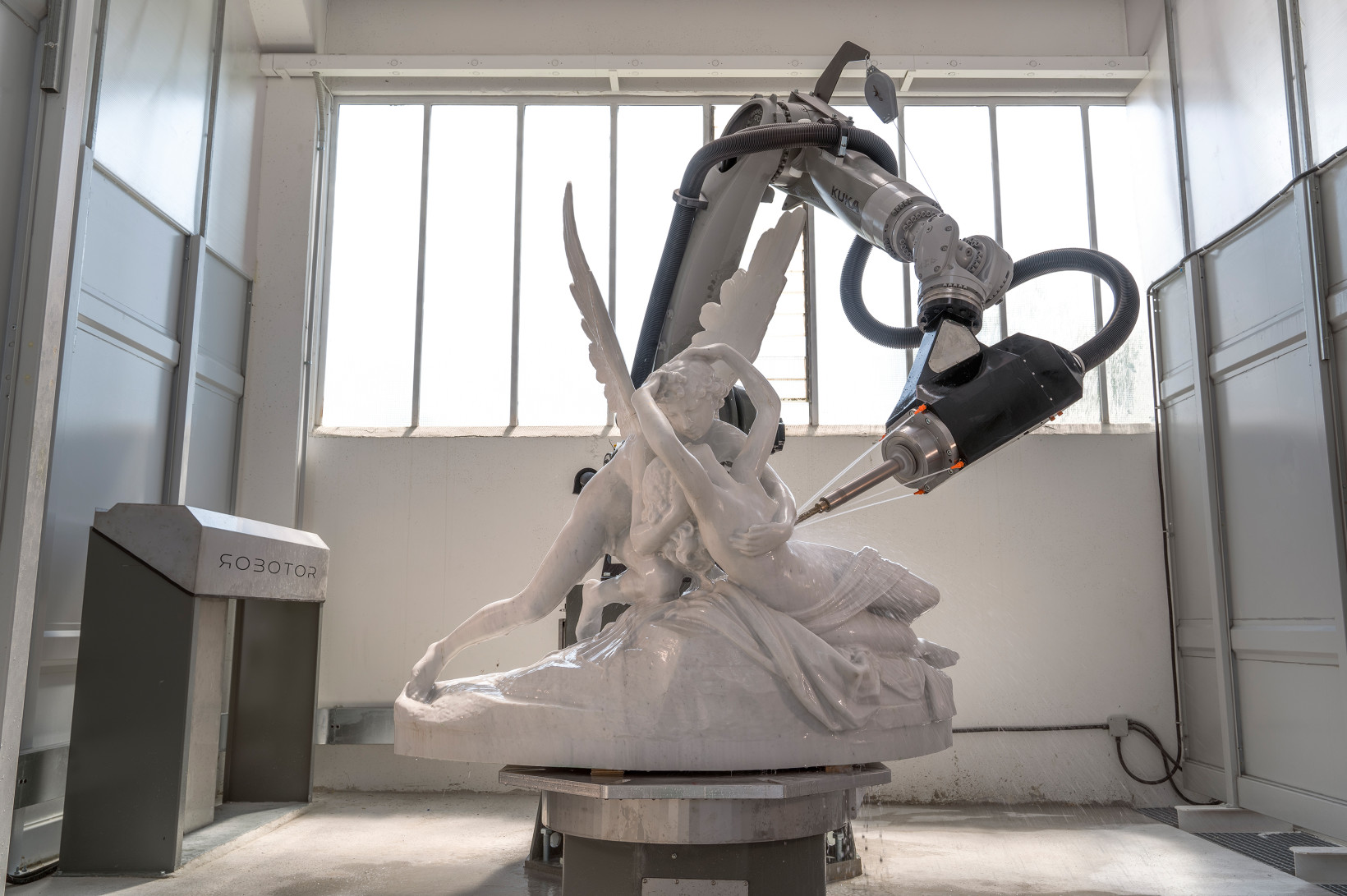 The replica of Amore e Psyche by Robotor. Photo credit: Laura Veschi
The replica of Amore e Psyche by Robotor. Photo credit: Laura Veschi
In 2022, the startup made a total of around 400 sculptures. Massari did not disclose the price of the machines or the cost of commissioning a sculpture.
Human vs. Robot: Who is the True Creator?
Fast, accurate and efficient, Robotor’s mechanical sculptors rival the work of even the masters of the Renaissance. This begs the question: is there enough room for human agency?
Massari’s answer is succinct: the robot will never replace the artist. “It’s not a creative, it’s just an enforcer,” he insists.
For the co-founder, the robotic chisels essentially replace the tedious and time-consuming work that artists would normally entrust to specialized laboratories to realize their vision.
“It’s rare that the artists do all the phases themselves,” explains Massari, noting that they can intervene directly in the finishing phase or give specific instructions.
“That’s how Michelangelo operated, and that’s how artists operate today,” he adds.
In fact, he explains that the creative process hasn’t changed at all. Sculptors used clay or plaster of paris sketches for centuries before moving on to marble work. Today there is another step: a 3D model created from the sketch, which is essential for the software that controls the robot.
And by replacing the traditional tedious and time-consuming production process, Robotor really wants to expand the creative possibilities of artists.
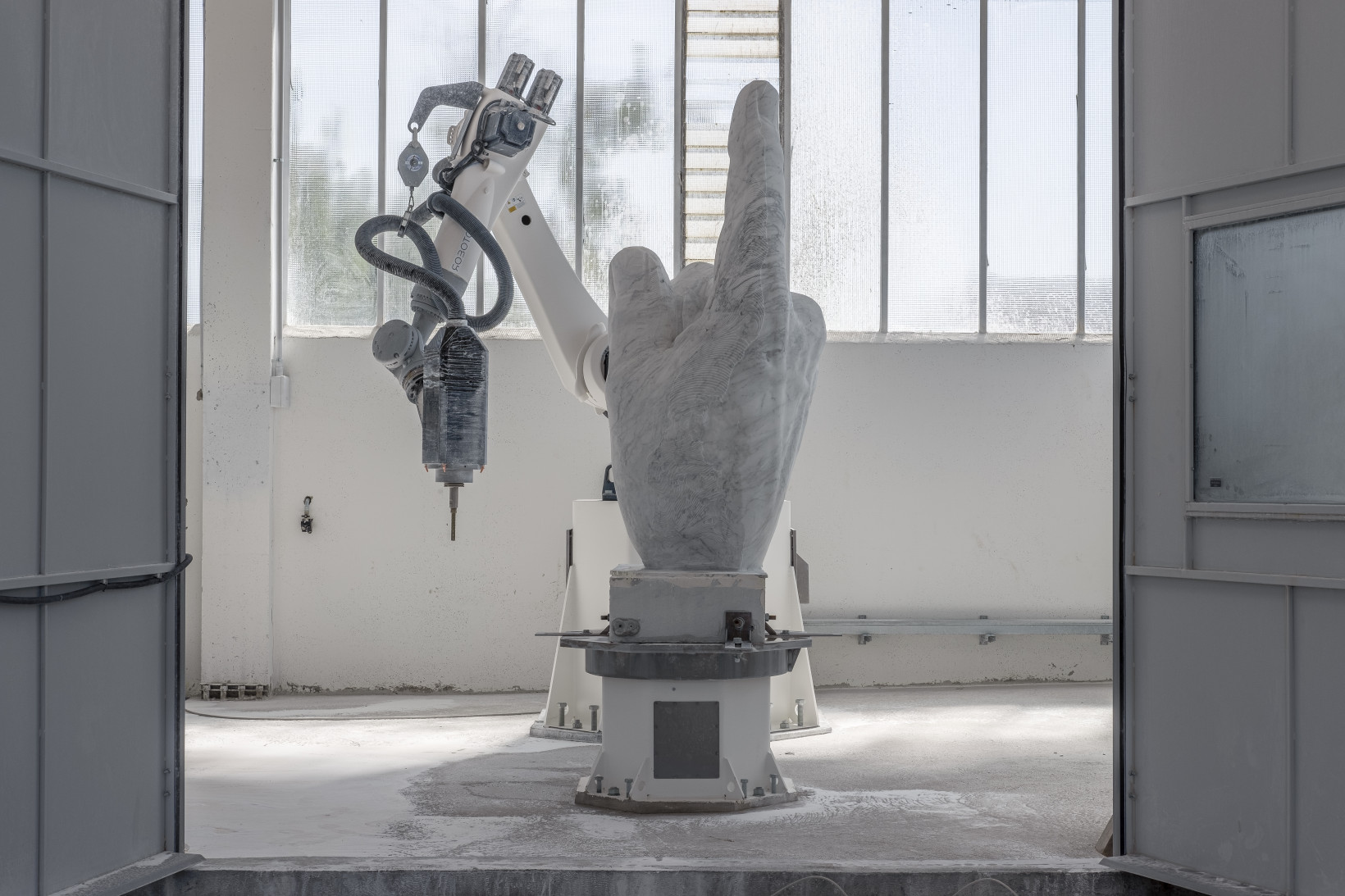 The Finger of the Constant by Fabio Viale. Photo credit: Laura Veschi
The Finger of the Constant by Fabio Viale. Photo credit: Laura Veschi
“Art history is a continuous history of innovation,” says Massari. “Artists have always relied on technological knowledge and ingenuity to find the materials and tools they need to express their dreams, thoughts, visions or beliefs. And innovation has always impacted the way art is made.”
The startup’s ultimate goal is to usher in a new era of sculpting, where the expression of human artists is supported and augmented through the use of robotics and AI. “This era is no longer made of broken stones, chisels and dust, but of scanning, point clouds and design,” say the co-founders.


Comments are closed.